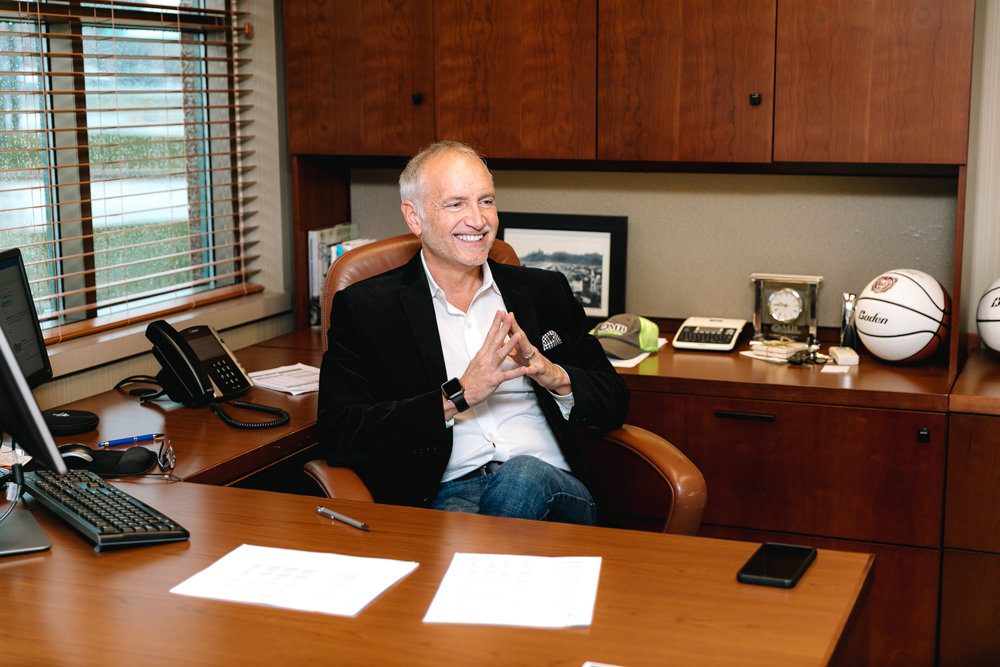YOUR BUSINESS AUTHORITY
Springfield, MO
YOUR BUSINESS AUTHORITY
Springfield, MO

Mark Harrington is a veteran community banker leading a team of over 100 employees, seven branches and $600 million in assets.
SBJ: Describe the banking industry for 2021 in one word:
Harrington: Strong. We’re coming off a surprisingly good year for the uncertainty we had. We and our local peers, I’m sure, have good quality performing loan portfolios. The southwest Missouri economy is a little insulated. We had a lot of deals put on the shelf early in the year, with the pandemic. With the way our local economy has been performing, a lot of those have come off the shelf – mostly sizable loans. A lot of that is development and construction business, which is really strong in our area right now.
SBJ: What are the top challenges and opportunities?
Harrington: Still the uncertainty around the virus. Most of us have made additional loan-loss provisions this year … in case there are problems down the road. We don’t see that coming right now. In southwest Missouri, we’re seeing an influx of new people. It’s a desirable area. We’ve hired for a couple of key positions lately, and we’ve had applicants from across the United States. That’s a testament to our quality of life and the optimism people have about Springfield.
SBJ: Old Missouri Bank just hired a new chief operations officer. Stephen Bishop comes from Jack Henry & Associates Inc. – a financial software company but not directly working in banking. Do you see more banks making unconventional hires, bringing in talent from outside of the industry?
Harrington: We have done some of that. It’s like the old football adage: You draft the best available athlete. There are technical and analytical parts of banking, but analytical parts transfer from industry to industry. We’re looking for innovation, and there’s a big push for digital in banking. To capture the current generations and the ones behind them, we have to have all the right digital tools. We had a couple of good candidates from California, New York, Cincinnati, Atlanta. We were really surprised. Some of those were industry insiders and some would have been capable. It may be a trend. We hired someone who was not an industry insider.
SBJ: What does the next round of economic stimulus funding mean for banks?
Harrington: The (Paycheck Protection Program) funding program was not only a lifeline to the businesses but it also was good business for the banks. That’s part of why we saw some of those increases in income, the fees related to PPP. We used it as an opportunity to reach a lot of new people. We had a way to keep small businesses going; we get money in the hands of people that need it without having to work with the unemployment office. I think we’ll see something similar with the second go-round. I think there will be some guidelines related to show a drop in revenue compared with the previous year. We anticipate the people we deal with, it may run a quarter of the volume the first time through but more targeted to people who have suffered more acutely.
SBJ: Next trends?
Harrington: We saw a big increase in our digital online account openings. Some of that has fallen back. Most of our branches have been opened – we closed all of them for about six weeks. We don’t see as much customer traffic in the branches … which is why we are focusing on digital customer experiences about as much as anything. A lot of people who shopped online figured out it was easy; people who never thought about using remote deposit capture found it was a lot easier. We also learned how productive we can be with a remote workforce. We’re probably going to have people who work remotely part of the time and some maybe most of the time. The push online has jumped a few years ahead of where it might have been.
SBJ: Federal Deposit Insurance Corp.-insured institutions reported aggregate net income of $51.2 billion in third quarter 2020, up $32.4 billion from second quarter 2020 but down $6.2 billion from the year-ago quarter. What’s behind that movement?
Harrington: You probably saw a contraction in credit card income, payment system income was down, deal-making was down – that goes into the aggregate for big banks. A lot of (initial public offering) activities were put on the shelf during that time, so that’s why the big increase from second to third quarter. That it was down from a year ago, I would say some of that deal-making just hasn’t rebounded. That drives a lot of bank income, but that’s mainly the money center banks. A lot of credit cards got paid off and people switched to debit card activity. We’ve seen an uptick in debit card activity since the pandemic hit. The money we make on interchange income has been up by a good percentage.